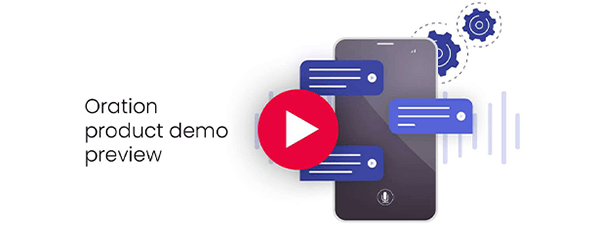The value of measuring your customers’ experiences
Having transparency over your customers’ experiences can help you to identify weaknesses in your customer journey and make improvements before they start to impact your bottom line. In fact, with a global survey across 16 major economies finding that poor customer service is costing USD$338.5 billion each year, it’s fair to say that your business’ customer experience investments should be considered with the same level of due diligence as any other business investment. It’s not all about what you stand to lose either. Research shows that companies that excel at customer experience typically grow their revenues between 4%-8% above their market. According to the study, the quality of customer experience is also linked to increased loyalty and turning customers into promoters with a lifetime value up to 14 times greater than that of detractors.What is customer experience?
Before you think about gaining those crucial insights into the experiences your customers are having with your brand, you need to know exactly what it is you should be looking at. Customer experience – often referred to as CX – is everything to do with how your brand interacts with your customers, how these interactions make them feel, and the perception they’re left with. Importantly, how your brand is perceived by customers following their interactions will influence whether they’re likely to return in future and how positively they will speak about your brand in front of others. There are many things that play a part in shaping the customer experience – some of these include how easy it is to navigate your website, the ease of transactions including payment options, the effectiveness, accessibility, and quality of your customer service and speed of resolutions, and even the range of delivery options you offer. And there are plenty more.What are your options when it comes to measuring the customer experience?
Two of the most common metrics used by companies to keep track of the experiences their customers are having are the Net Promoter Score (NPS) and the Customer Satisfaction Score (CSAT). But NPS and CSAT are not the same. To help you decide which one is right for your business, here’s an overview of the key differences between CSAT and NPS including what each metric looks at, how they work, and some of the pros and cons of each.Net Promoter Score (NPS)
Put simply, NPS is a measure of customer satisfaction, but it’s designed to give you a more holistic and longer-term view of your business’ growth prospects by asking your customers just one simple question: How likely are you to recommend our products, services, or brand? While the answer to this question gives an indication of how satisfied and loyal your customers feel towards your brand, a study by Harvard Business School puts the value of this knowledge in perspective by suggesting that increasing customer loyalty by 5% could drive an increase in profits of between 25% and 95%.- When is NPS measured? The NPS survey question is usually asked of customers after they’ve had dealings with your business either over the phone, via email or text message, or even online following a transaction or Live Chat. Typically, NPS survey questions can be asked at various stages of the customer experience cycle such as after a customer engages with your customer service team, after they use your website to make a purchase or carry out other activities, or at specified times throughout the course of an ongoing subscription or customer relationship.
- How is NPS calculated? Customers are asked to respond to the question on a customer satisfaction rating scale of 0 – 10, where 10 is most likely to recommend to others and zero is not at all likely. Importantly, those who give a score of 9 or 10 are identified by the NPS system as active ‘Promoters’, which means they are satisfied with your brand and will probably recommend to others. On the other hand, customers who rate your brand between 0 and 6 will be categorised as ‘Detractors’ and anyone who gives a score of 7 or 8 will be set aside as ‘Passive’.To work out your overall NPS score, the percentage of Detractors (the number of customers who rated 0-6 divided by the total number of respondents and multiplied by 100) is deducted from the percentage of Promoters (the number of customers who rated 9-10 divided by the total number of respondents and multiplied by 100). This means you could have an NPS score of anywhere between -100 and 100. The question is, then, what is a good NPS score? While it goes without saying that a score of below 0 is a sign your brand is struggling to generate loyal customers, a score above 0 indicates you are in positive territory when it comes to the balance of people who will recommend your brand versus those who won’t. Of course, the higher your score is over 0, the stronger the indication is that you’re delivering great customer experiences and on the path to solid growth.
Customer Satisfaction (CSAT)
Alternatively, if you’re wondering what you can measure instead of NPS, Customer Satisfaction (CSAT) surveys illicit more direct insights compared to NPS because they typically ask how satisfied a customer is with a specific interaction, product, or service.- When is CSAT measured? A CSAT question might ask, on a scale of 1 -5 where 5 is “very satisfied”, how satisfied a customer was with their customer service experience after speaking to a call centre agent. A CSAT question could also be sent via email or SMS following a product delivery or after visiting a hotel or restaurant to find out about a customer’s satisfaction with different products, food, cleanliness, or staff. And there are plenty of other examples of how CSAT survey questions can be used to measure satisfaction levels with specific experiences or features of your brand.While CSAT survey questions are generally closed, you can also invite more detailed commentary from your customers to accompany their score, so they can explain exactly what they loved about their experience or what let your brand down.
- How CSAT is calculated To reach a final customer satisfaction score, the CSAT formula determines a percentage based on the average result for the survey question. For example, supposing your scale includes 5 – Very Satisfied, 4 – Satisfied, 3 – Neutral, 2 – Dissatisfied, and 1 – Very Dissatisfied, the number of respondents who answer in the 4-5 range will be divided by the total number of respondents to the survey and multiplied by 100. In other words, if 100 respondents out of 150 rate an experience 4 or 5, then your CSAT score will be 67 – and that would certainly be considered a good CSAT score.
What are the pros and cons of NPS versus CSAT?
Crucially, the NPS survey question gets to the heart of what drives revenue growth by finding out the proportion of customers who are likely to give you repeat business and recommend your brand to others. On the other hand, the more targeted nature of CSAT allows you to identify areas where you perform well and areas that need improvement, but you can never be sure how your customers’ rating will affect their future decisions. For example, while a frequent customer may give a poor rating following one late product delivery, they may still be an advocate for your brand because of a more positive experience with your brand overall.- Accuracy NPS surveys are considered one of the most accurate and realistic metrics because they can be configured to ask the same question of your entire customer base at various stages of the customer journey. Importantly, unlike CSAT questions, this means the overall score is not as likely to be skewed by variables such as the demographics of customers who buy certain products or interact with your brand in a certain way, or how recently the customer has dealt with your business.
- Targeted insights You can analyse NPS data to identify patterns in the types of customers who fall into the categories of Promoter, Passive, or Detractor, so you can determine which market segments you need to focus on. Constantly analysing how NPS scores change over time could even help you gage your customers’ response to customer service investments and get a picture of how your business is likely to grow in future.One of the biggest disadvantages of the NPS survey, though, is that it can stifle a company’s proactivity when it comes to continually improving the customer experience. NPS is normally accompanied by a follow on question, "and why did you give that score?" - having the full response automatically transcribed by the survey tool (voice or otherwise) provides deep insight that can be mined for process improvements. As it is an open question you can gain better insights than you get from a closed-form question (such as CSAT).
- Flexibility Above all, CSAT surveys give you the flexibility to customise unlimited questions capable of extracting in-depth actionable insights around all your customer touchpoints – so you can compare and contrast exactly where your highest and lowest ratings are coming from. You can also address the question of ‘why?’ by adding an open commentary box to accompany your 1-5 customer satisfaction rating scale. Meanwhile, to ensure you achieve maximum engagement from your customers, you can continually experiment with the way you frame CSAT questions to see which ones give you the best response rate.There are a few drawbacks with the flexibility of CSAT questions, however. People will naturally interpret specific questions in different ways, such as the definition of a satisfactory experience versus non-satisfactory. At the same time, due to the subjective nature of the questions, some customers will have a higher threshold for what it means to have a “very satisfactory” experience versus a “satisfactory” experience, which means the accuracy of data and how they should inform your actions might be limited.Essentially, NPS surveys skip this dilemma by asking how a customer will behave in relation to your brand irrespective of how they got there – hence why NPS is considered a more reliable growth indicator.
It’s clear that NPS and CSAT are not the same, so you’re probably wondering whether NPS is better than CSAT or vice versa. In fact, while the information above might help you decide the most suitable metric for your individual business, many companies will find they both work well together because CSAT has the potential to play a key part in your strategy to raise your NPS. Learn how you can improve your customer experience with Oration, watch the demo here .
Oration helps you nurture more satisfied customers by directing them to the most appropriate outcome first time and reducing the time it takes to reach a resolution. The technology also helps customers avoid the common pain point of lengthy call queues by providing easy access to unlimited self-serve options or the option to switch to other digital channels to get the information they need in a format that suits best.







